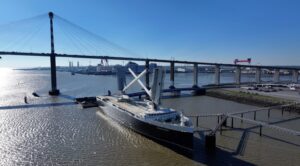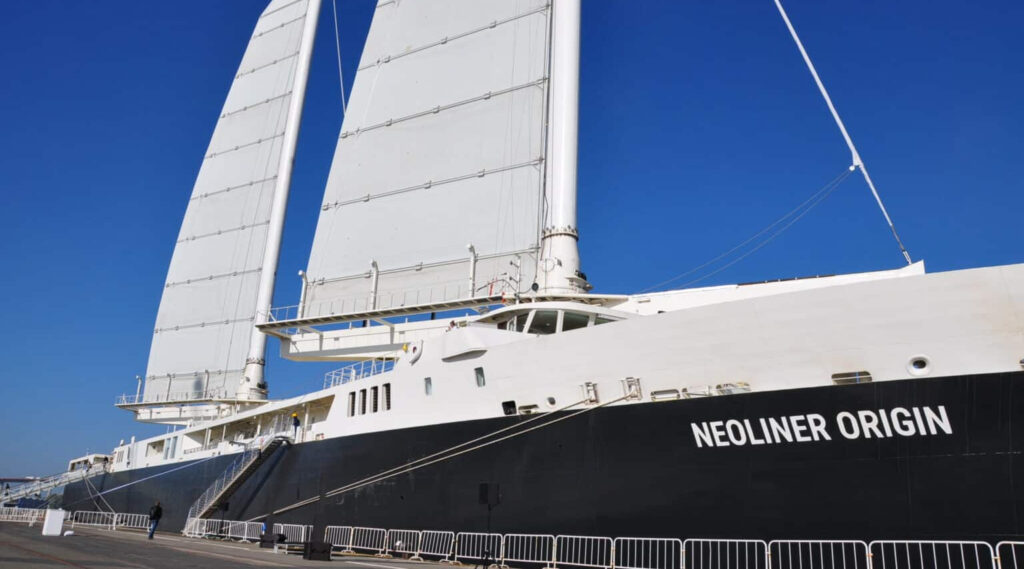Maiden voyage Neoliner successfully completed
Neoline’s sailing freighter Neoliner Origin has successfully completed its first commercial sailing. The vessel arrived in home port Nantes, having left Turkey at the end of September after completing construction.
The vessel made a scheduled stop in Bastia en route to France, where 315 cars for Neoline’s customer Filpar were loaded onto the ship. These vehicles were unloaded in Marseille the following day.
According to NEOLINE, the vessel’s final sea trials have shown that it is fully operational. The official delivery took place last Friday, during which the French flag was hoisted.

The first sail-powered cargo ship arrived at the mouth of the Loire on Sunday 12 October, before being inaugurated in Nantes on Monday 13 October. On 15 October, the ship embarked on its first transatlantic crossing to connect Saint-Nazaire with Saint-Pierre-et-Miquelon in NewFoundland in eight days.
Five times less fuel
The project is the result of Neoline’s vision since its founding in 2015 to become “the world’s first shipping company specialising in modern roll-on/roll-off cargo ships powered primarily by wind and sails”.

Equipped with two SolidSail sails, designed by Chantiers de l’Atlantique in Saint-Nazaire, supplemented by diesel and electric engines, the 136-metre vessel is expected to consume five times less fuel than a conventional ship. The Neoliner Origin has a payload of 6,300 tonnes, and can carry up to 321 cars, 265 20-foot containers or 125 40-foot containers. Each mast is 76 metres high and supports 3,000 square metres of rigid sails.
“The big advantage of this system is that the sails do not wear out, unlike conventional fabric sails. Their lifespan is equal to that of a ship. This equipment can be repaired, unlike a fabric sail that has to be completely replaced after 2 or 3 years. Only the jibs are made of cloth,” says Jean Zanuttini, president of Neoline.

The masts have the special feature of being able to tilt completely and rotate 70 degrees. “This allows the clearance height to be reduced from 89 m to less than 42 m. This process allowed us to reach Nantes, as we had to tilt the masts to pass under the bridges of Saint-Nazaire and Cheviré.”
Transatlantic route
Neoline Armateur, the shipping company set up in 2021 to operate such vessels, reached its €60m funding target with a combination of public and private partners, including CMA CGM, a major French shipping group. The company has already signed agreements with major clients, including Renault Group, Beneteau Group, Manitou Group, Michelin, Jas Hennessy & Co, Clarins, Longchamp and Rémy Cointreau.
The ship is now heading for its first stopover in the Mediterranean before arriving in Saint-Nazaire on 12 October. From there, it will make its first transatlantic crossing. Neoline plans to deploy the ship on a route between Saint-Nazaire in France and Saint-Pierre-et-Miquelon in Newfoundland, Baltimore in Maryland and Halifax in Nova Scotia.
Source and image: Neoline & NN-developpement.


